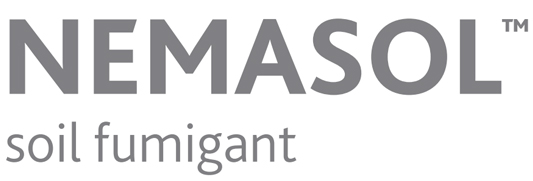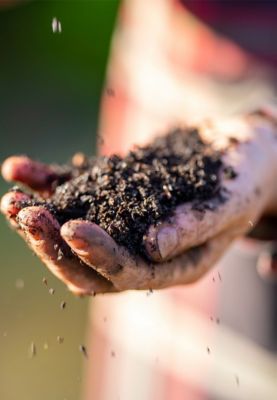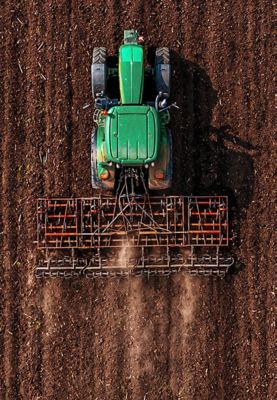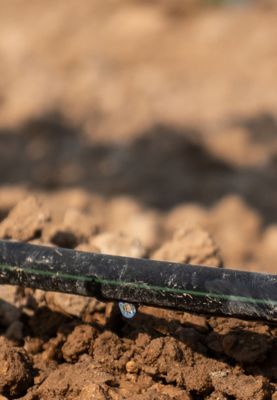For information on the principles of metam activity, which are the same for all application methods, see our application recommendations.
Safe application by drip irrigation
A common application method is drip irrigation, which is employed in many high-value crop greenhouses and fields. Drip irrigation tubes are spaced 20 to 50 cm apart and perforated every 15 to 30 cm.
When using Nemasol, the tubes should be covered by plastic film tarpaulin. Nemasol is then applied as a water-diluted solution/mixture supplied by an automatic dosage controller/dosing pump such as the Dosatron. A dilution of 0.1% to 2.0% should be achieved. The system must be fitted with an anti-return valve. It takes one to four hours to apply 10 to 40 mm of dilution. To obtain good diffusion of Nemasol, the soil should be reasonably compacted, especially in the case of sandy soil.
The following images show how Nemasol diffuses in the soil with the waterfront of the diluted metam solution. It’s important that metam reaches the target depth, and the horizontal movement should also be sufficient enough to treat the complete soil layer by enabling the methyl isothiocyanate (MITC) gas formation to spread throughout the soil. A well-prepared soil crumbled with open channels facilitates a good gas diffusion of MITC to achieve optimal efficacy. Optimal conversion of Nemasol to MITC occurs when the soil humidity is between 50% and 75% of the field capacity and the soil temperature is between 10° and 25°C at a depth of 10 to 15 cm.

The emitter spacing and the emitter flow rate are mainly influenced by the type of soil.
Water moves in different ways and creates different wetting patterns. It is distributed below the surface of the soil both vertically, through the force of gravity, and horizontally, through the capillarity of the soil.

Gas-tight plastic film tarpaulin installed over the drip irrigation system has several important functions
- Retaining MITC: The film helps to retain MITC in the soil for a longer duration, enhancing its efficacy and promoting better crop yield.
- Improved MITC movement: The film facilitates improved movement of MITC within the soil layers, ensuring better distribution and penetration for effective pest and disease control.
- Reduced MITC emission: By acting as a barrier, the film drastically reduces the emission of MITC from the soil, minimizing its release into the environment.
- Dose rate reduction: The use of the film allows for a reduction in the required dose rate of metam, optimizing its usage and potentially reducing costs.
- Worker and bystander safety: The film serves as a protective measure, mitigating the exposure of workers and bystanders to MITC and promoting safety during application and subsequent activities in the treated area.
- Integrated pest management (IPM): In warmer regions, plastic film enables the combination of soil disinfection with soil solarization as part of integrated pest management strategies.

Certain statements may not be applicable in all geographical regions. Product labeling and associated claims differ based on government requirements. Use plant protection products safely. Always read the label and product information before use.





